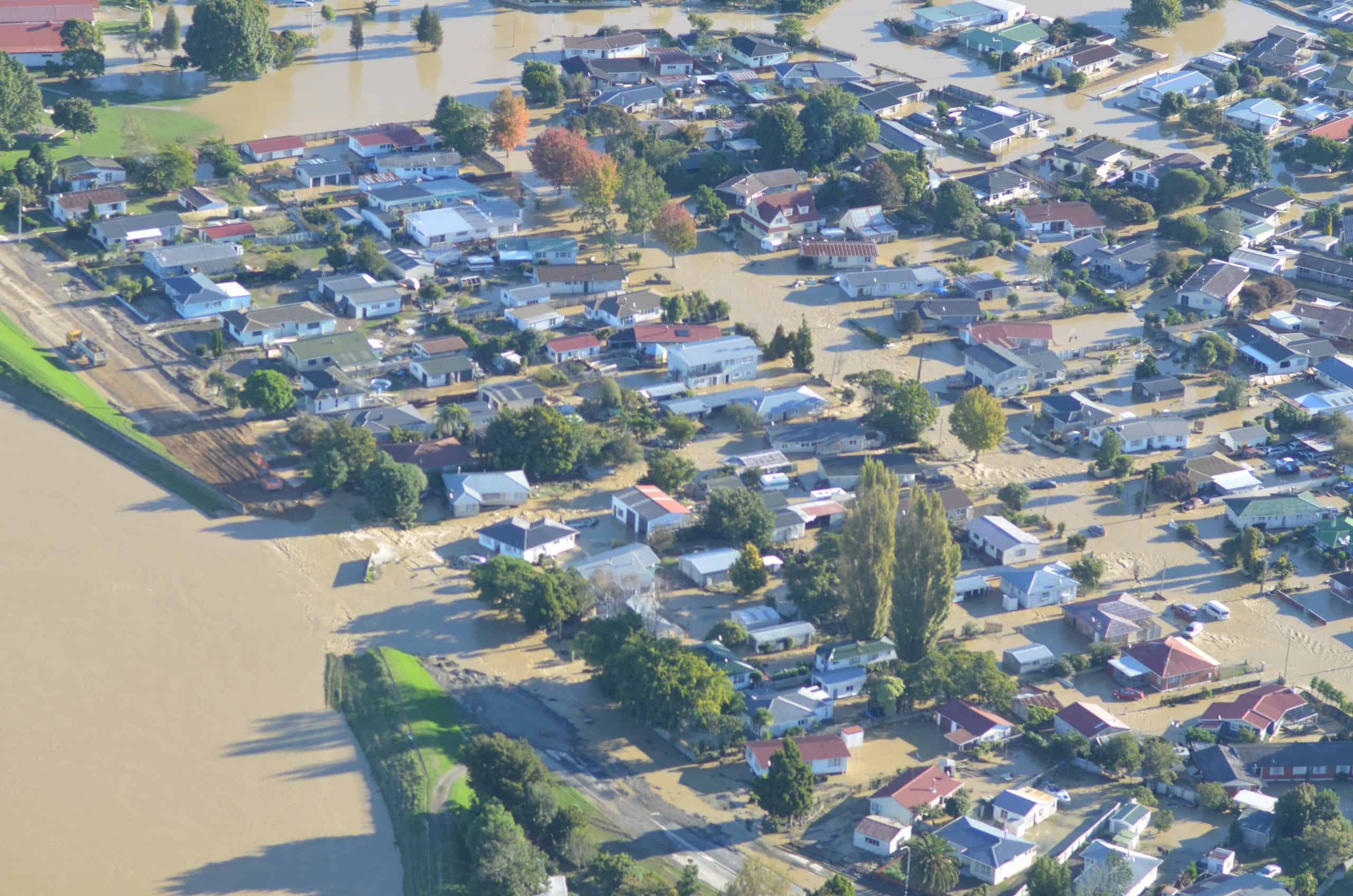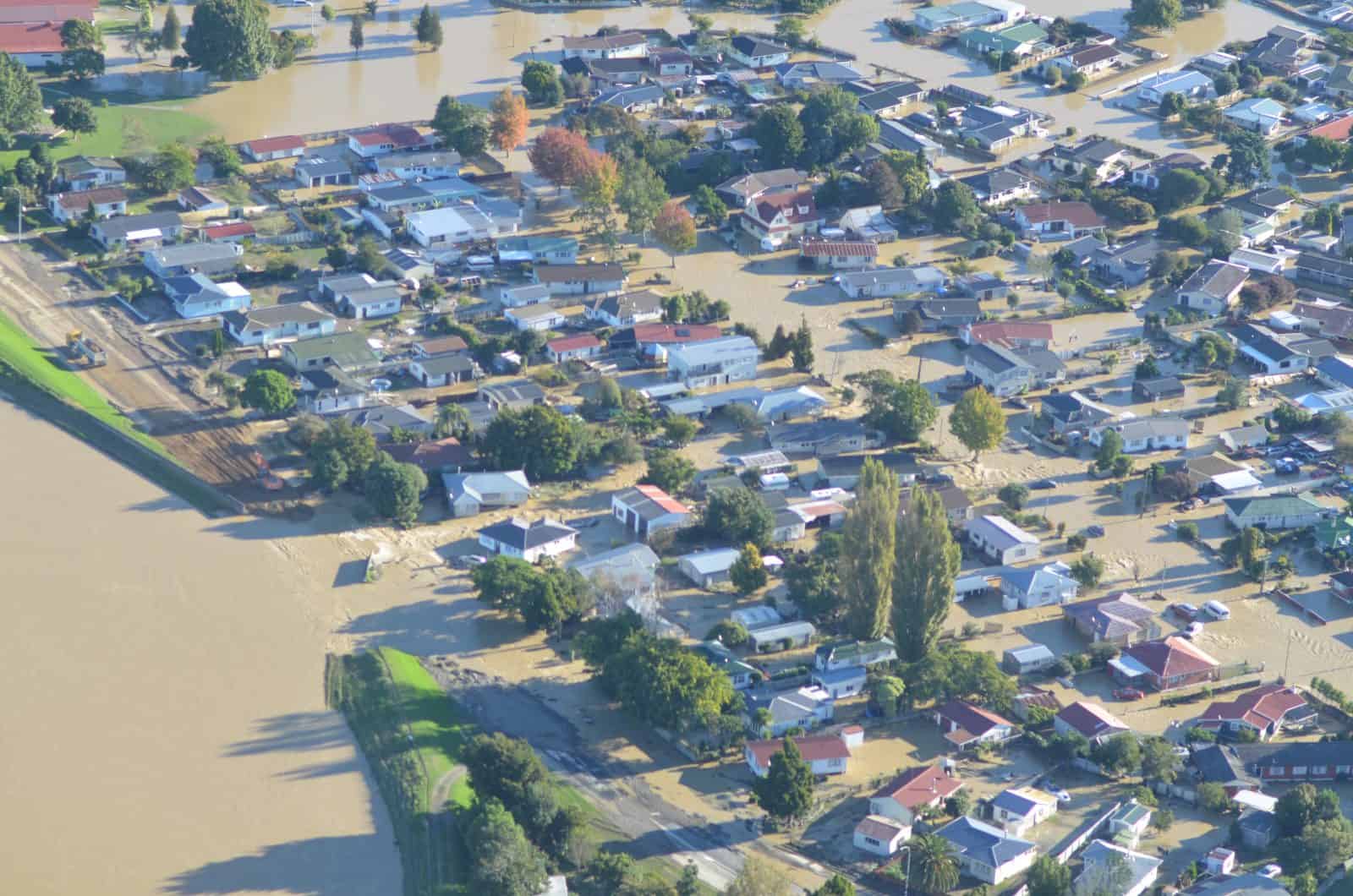Understanding flood protection stopbanks across New Zealand
20/04/2018
By Kaley Crawford-Flett
Stopbanks (levees) protect many New Zealand towns and cities from floodwater damage. At the moment, stopbanks are managed based on local priorities, and we don’t have a nation-wide understanding of comparative protection level, impact, and risk. A new collaborative research programme links researchers at the University of Canterbury and University of Auckland with river managers from regional and unitary councils, in order to better understand and compare the characteristics of stopbank networks across New Zealand.

Stopbanks are a primary form of flood protection for many towns and cities in New Zealand. Like many forms of protection, they help to shield us from certain types of harm during unusual events. Just like seatbelts, stopbanks are rarely needed, but when they are, we want them to work properly to protect us. However, no form of protection is able to prevent damage in every situation.
In New Zealand, we presently have a flood protection approach that amounts to ‘local solutions to local problems’. This approach means that each region manages their own flood protection based on available resources and priorities. However, every region differs in its available resources and exposure to floods. Every region is different in terms of the number of stopbanks, likelihood of flood events, areas (and assets) that stopbanks protect, and ratepayer base (ability to pay for improved flood protection). Is your seatbelt a piece of rope tied around your waist? Or is it a 5-point racecar harness? Is it frayed or brand new?
Given the regional nature of stopbank and flood protection management, direct comparison of stopbanks across the country is difficult. Do stopbanks in Palmerston North provide as much protection as those in Paeroa? Unlike seatbelts, which are assessed based on known standards during a Warrant of Fitness, there are no standardised national data sets, indicators or methodologies to assess the reliability of stopbanks across New Zealand.
Over the past 18 months, researchers at the University of Canterbury and The University of Auckland have been working with regional councils and unitary authorities to compile the first New Zealand Inventory of Stopbanks (NZIS). The intent of this study is to understand the make-up of stopbank assets in New Zealand by creating a single, standardised, reliable and spatially-referenced inventory. Analysis of the NZIS is helping us to understand the properties and condition of the New Zealand stopbank network – for example: height, type, geometry, location, design and service levels of the embankments that protect New Zealand from floods. By considering the environmental conditions in different areas, such as seismic risk and liquefaction potential, we are beginning to understand what kind of conditions our stopbanks need to withstand (will your seatbelt be used on a high-speed Formula 1 racetrack or in a golf-cart?).
To date, and with the help of council river managers, researchers have assembled a database of over 4,800 km of stopbanks located across all 16 regions in New Zealand. These stopbanks are presently being classified in terms of national liquefaction susceptibility models. This will help us understand which stopbanks should be prioritised for inspection or remediation after earthquake events.
In the coming months, the final outcomes of the NZIS project will be presented to New Zealand council river managers. One of the main findings of the study is how little we know about the engineering properties of stopbanks – especially those that were built many decades ago. Attributes such as height, year of construction, and embankment material type are not widely reported for stopbanks in the NZIS. It is expected that further work will be required to fill in data gaps so that we can eventually predict the likely performance of stopbanks across New Zealand.
Just like seatbelts, stopbanks constitute an important form of protection for New Zealanders. However, we don’t currently have a “Warrant of Fitness” standard to compare, assess, or rank the likely level of protection afforded by our stopbanks. Current research aims to assemble a nation-wide inventory of stopbanks (NZIS) so that councils, government departments, and the public can begin to understand the reliability of the structures that protect us in floods.




